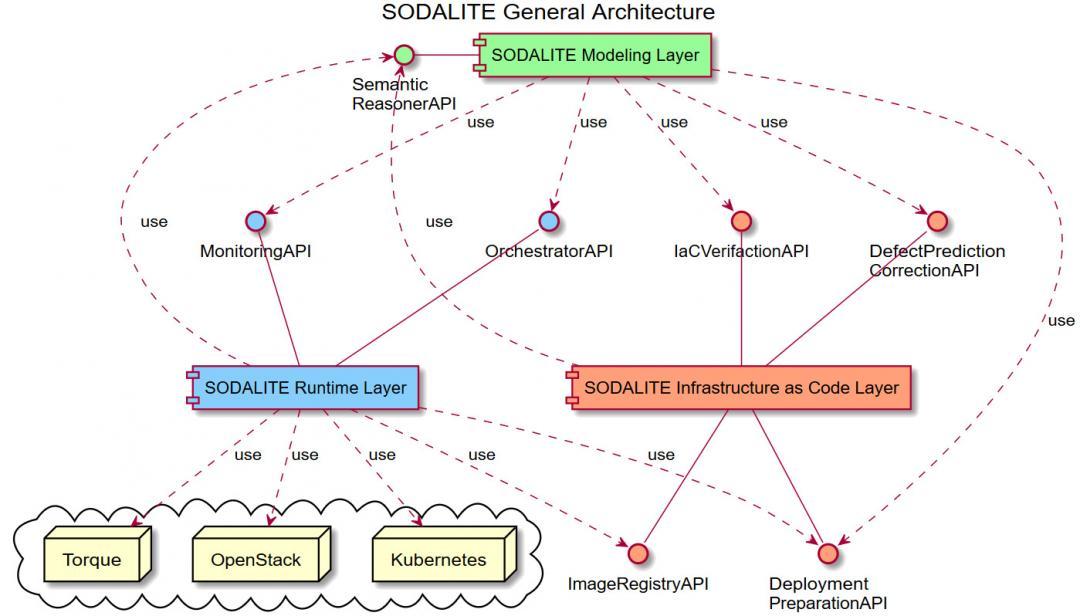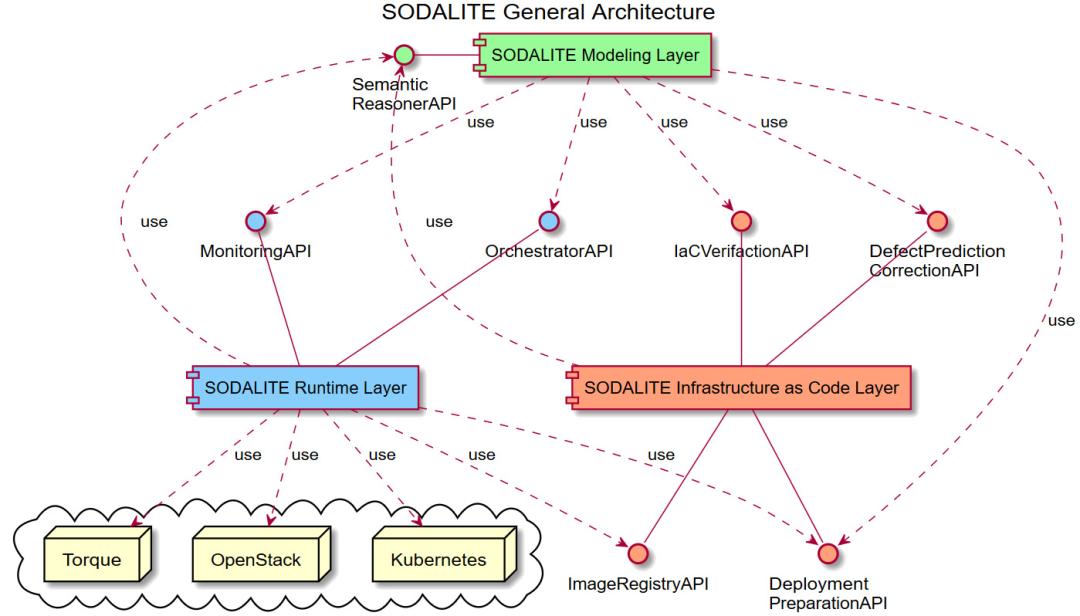The back-end for practically any new software application domain, from healthcare to aerospace, is in the data centre.
Within such data centres, there are multiple and diverse computational resources ranging from public and private Cloud to HPC systems and exploiting a variety of components, such as accelerators, GPUs, configurable processors, and non-x86 CPUs such as ARMv8.
Managing applications on such composite and heterogeneous systems is hard. It requires different skill sets, depending on the targeted resources, the chosen configuration, and deployment technologies and is nowadays accomplished through the creation of software-defined infrastructures.
SODALITE is addressing the gap emerging within such software-defined, application-specific infrastructures.
It will provide developers and infrastructure operators the tools that simplify application and infrastructure description and suggest the best deployment scenarios. This will enable DevOps teams to deploy their applications in a simpler and faster way.
The goal of SODALITE is to provide design time support for optimal application deployment configuration and an execution environment for heterogeneous applications that is able to evolve based on the diverse circumstances occurring on heterogeneous, software-defined, high-performance, cloud, HPC and GPUs infrastructures.

